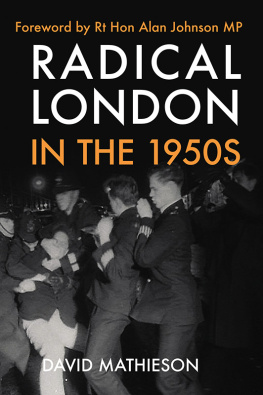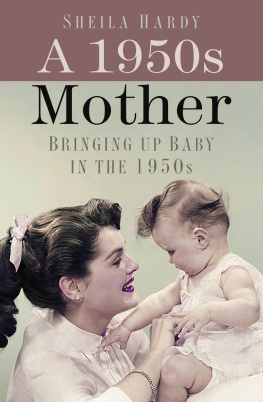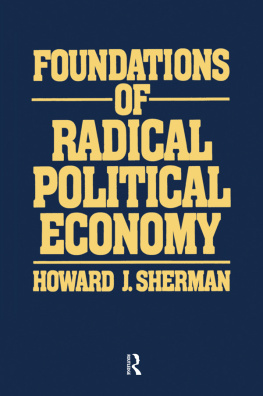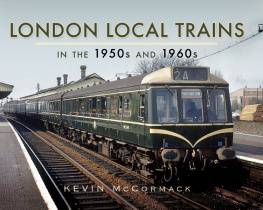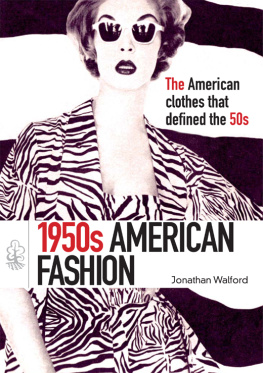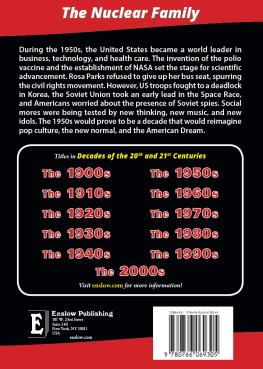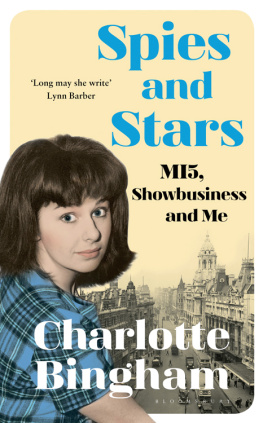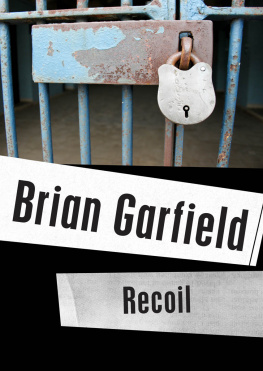Mathieson - Radical London in the 1950s
Here you can read online Mathieson - Radical London in the 1950s full text of the book (entire story) in english for free. Download pdf and epub, get meaning, cover and reviews about this ebook. year: 2016, publisher: Amberley Publishing, genre: Politics. Description of the work, (preface) as well as reviews are available. Best literature library LitArk.com created for fans of good reading and offers a wide selection of genres:
Romance novel
Science fiction
Adventure
Detective
Science
History
Home and family
Prose
Art
Politics
Computer
Non-fiction
Religion
Business
Children
Humor
Choose a favorite category and find really read worthwhile books. Enjoy immersion in the world of imagination, feel the emotions of the characters or learn something new for yourself, make an fascinating discovery.
Radical London in the 1950s: summary, description and annotation
We offer to read an annotation, description, summary or preface (depends on what the author of the book "Radical London in the 1950s" wrote himself). If you haven't found the necessary information about the book — write in the comments, we will try to find it.
Mathieson: author's other books
Who wrote Radical London in the 1950s? Find out the surname, the name of the author of the book and a list of all author's works by series.
Radical London in the 1950s — read online for free the complete book (whole text) full work
Below is the text of the book, divided by pages. System saving the place of the last page read, allows you to conveniently read the book "Radical London in the 1950s" online for free, without having to search again every time where you left off. Put a bookmark, and you can go to the page where you finished reading at any time.
Font size:
Interval:
Bookmark:


Front cover: From footage supplied by British Path.
First published 2016
Amberley Publishing
The Hill, Stroud
Gloucestershire, GL5 4EP
www.amberley-books.com
Copyright David Mathieson, 2016
The right of David Mathieson to be identified as the Author of this work has been asserted in accordance with the Copyrights, Designs and Patents Act 1988.
ISBN 9781445661032 (PRINT)
ISBN 9781445661049 (eBOOK)
All rights reserved. No part of this book may be reprinted or reproduced or utilised in any form or by any electronic, mechanical or other means, now known or hereafter invented, including photocopying and recording, or in any information storage or retrieval system, without the permission in writing from the Publishers.
British Library Cataloguing in Publication Data.
A catalogue record for this book is available from the British Library.
Origination by Amberley Publishing
Printed in the UK.
In 1957, the prime minister, Harold Macmillan, coined a phrase that he hoped would sum up the period of his government our people have never had it so good. The problem was that for kids like me, growing up in Notting Hill, life was still far more of a struggle than Macmillan wanted to admit. True, the trauma of the Second World War was behind us and the Attlee government had made radical reforms. True, the country generally was becoming better off and a consumer boom was on the way. But, as those of us who lived in the capital at the time well knew, that was far from the whole picture. Families such as mine were increasingly left behind, trapped in a cycle of material poverty which Macmillans phrase did not begin to describe or explain.
It was not much different in other parts of London like Holborn and St Pancras, the area covered by this book and a bus ride away from where I lived. That things were not so good for all was visible from much of the shoddy housing which lined countless streets in central London. Dilapidated, overcrowded buildings were common and slum landlords became notorious for exploiting tenants. Then, as now, finding a decent place to live at an affordable rent was the big concern for many Londoners. Rebuilding the city after the war was a complicated, painful process. Making good the damage from the Blitz, clearing Victorian slums and housing young families of the baby boom generation was never going to be easy. Not surprisingly, there were many different views about the changes which were needed. In Holborn and St Pancras, the clash of ideas over housing and what London should look like led to an extraordinary breakdown of normal politics and some of the worst rioting ever seen in London. The 1950s are often held up as a golden age of political consensus but this well-researched book reveals a much more complex reality in London, which has too often been overlooked.
It is a timely moment to revisit this history because once again housing is at the top of the political agenda. Soaring rents and house prices in London mean that that there is a growing list of people from surgeons to school teachers who can no longer afford to live anywhere close to the communities which they serve. Stable neighbourhoods are breaking up. Sons and daughters cannot afford to live near and care for elderly parents. Corner shops shut down because they cannot afford to pay escalating rents and more public space, where gossip is swapped and friendships are forged, is lost. The current Tory proposals will do very little to help Generation Rent now and, as this book clearly illustrates, housing policies based on untrammelled market forces have never worked in London
Unfortunately, the book is opportune in another way too because it explains how splits, divisions and dogma on the left weakened the Labour Party as a credible electoral force during the 1950s. The Conservatives won three elections in a row and dominated the politics of the decade while a divided Labour Party was impotent, unable to properly protect the very people that it came into being to represent. The parallels with what is happening within Labour now are painfully obvious. For that reason alone this is a book well worth reading by anyone who wants to put the politics of today in their rightful historical context and learn from the mistakes of the past.
Rt Hon Alan Johnson MP
September 2016
1945
May
The Labour Party wins the general election with a majority of 146. Clement Attlee replaces Churchill as prime minister.
October
The United Nations comes into existence.
1946
March
Churchill delivers a speech in Zurich in which he warns of an iron curtain falling to dividing Europe. Second World War allies become enemies and enemies become allies.
May
The National Insurance Act lays the foundations for a cradle to grave welfare state with comprehensive unemployment, sickness, maternity and widows benefits.
1947
January
Nationalisation of the coal, gas and electricity industries.
August
India gains independence from Britain.
December
An exceptionally harsh winter is accompanied by a fuel shortage and financial crisis. A policy of austerity to cut public spending is introduced.
1948
June
Post-war immigration from the Commonwealth begins as the SS Empire Windrush arrives at Tilbury carrying nearly 500 Caribbean immigrants.
July
The National Health Service is established and becomes one of the most popular institutions in Britain, second only to the monarchy.
July
Berlin Airlift begins after Soviet forces blockade the city. In May 1949, the Soviets backed down and lifted their blockade.
July
Olympic Games open at Wembley Stadium in London the so-called Austerity Games.
1949
April
North Atlantic Treaty Organisation (NATO) founded.
June
George Orwells novel Nineteen Eighty-Four is published.
1950
February
The Labour Party wins the general election with Clement Attlee returned as prime minister. His majority, however, is reduced from 146 to just five and the socialist vision of a post-war New Jerusalem fades.
August
British troops arrive to support US forces in the Korean War. Some 4 million people would die in the conflict.
1951
May
Festival of Britain is opened to try and sustain a mood of post-war optimism.
October
Conservatives win the general election with a majority of 17 and Winston Churchill becomes prime minister at the age of seventy-six.
1952
February
George VI dies.
June
Elizabeth II is crowned.
1953
April
The structure of DNA is discovered by Watson and Crick.
May
Blackpool win the FA Cup largely due to a brilliant performance from Stanley Mathews.
June
England regain the Ashes after winning the series against Australia for the first time since 1934.
March
Joseph Stalin dies.
1954
March
The USA tests a hydrogen bomb in the Pacific 1,000 times more powerful than the atom bombs dropped on Japan.
May
Roger Bannister runs a mile in under four minutes.
1955
April
Winston Churchill retires as prime minister and is succeeded by Sir Anthony Eden.
May
Font size:
Interval:
Bookmark:
Similar books «Radical London in the 1950s»
Look at similar books to Radical London in the 1950s. We have selected literature similar in name and meaning in the hope of providing readers with more options to find new, interesting, not yet read works.
Discussion, reviews of the book Radical London in the 1950s and just readers' own opinions. Leave your comments, write what you think about the work, its meaning or the main characters. Specify what exactly you liked and what you didn't like, and why you think so.

